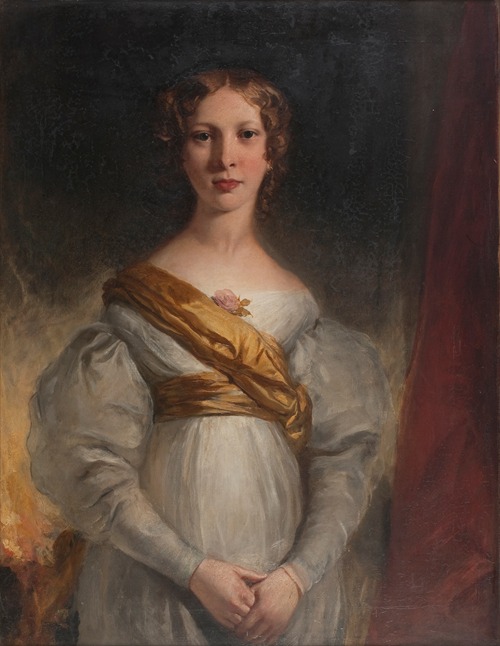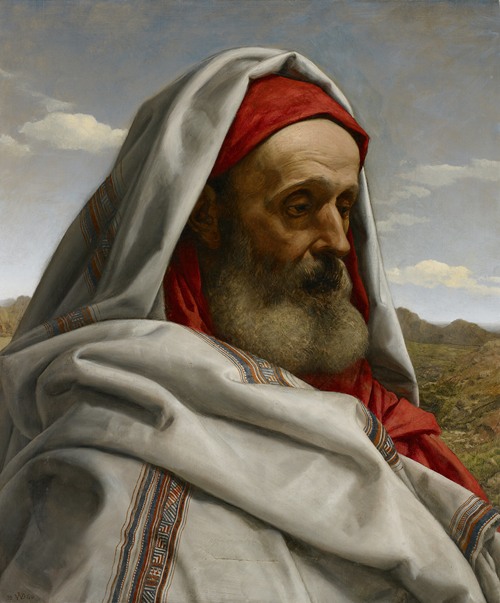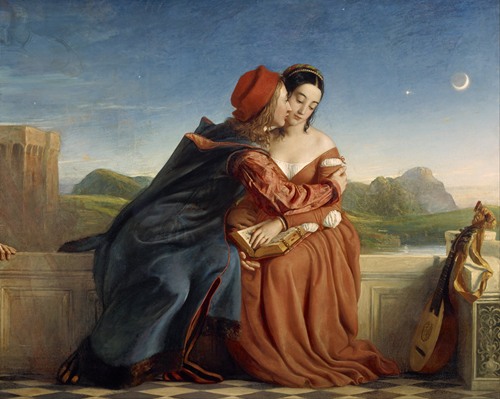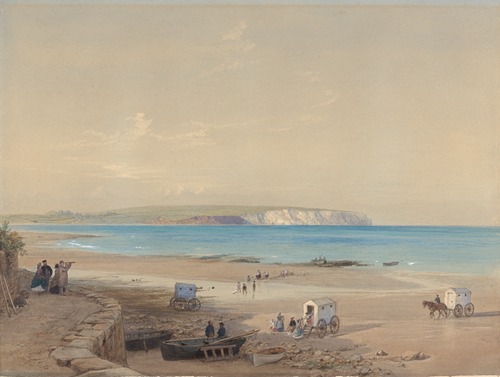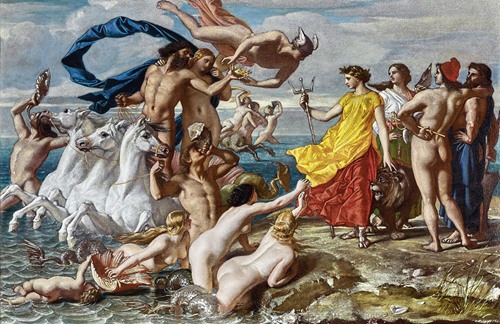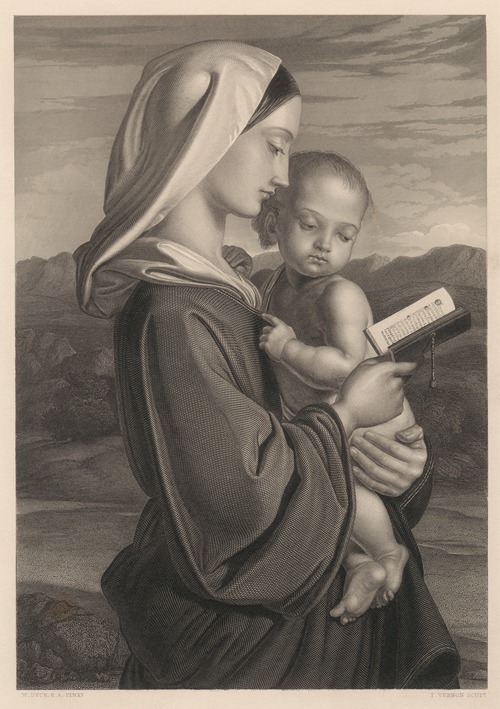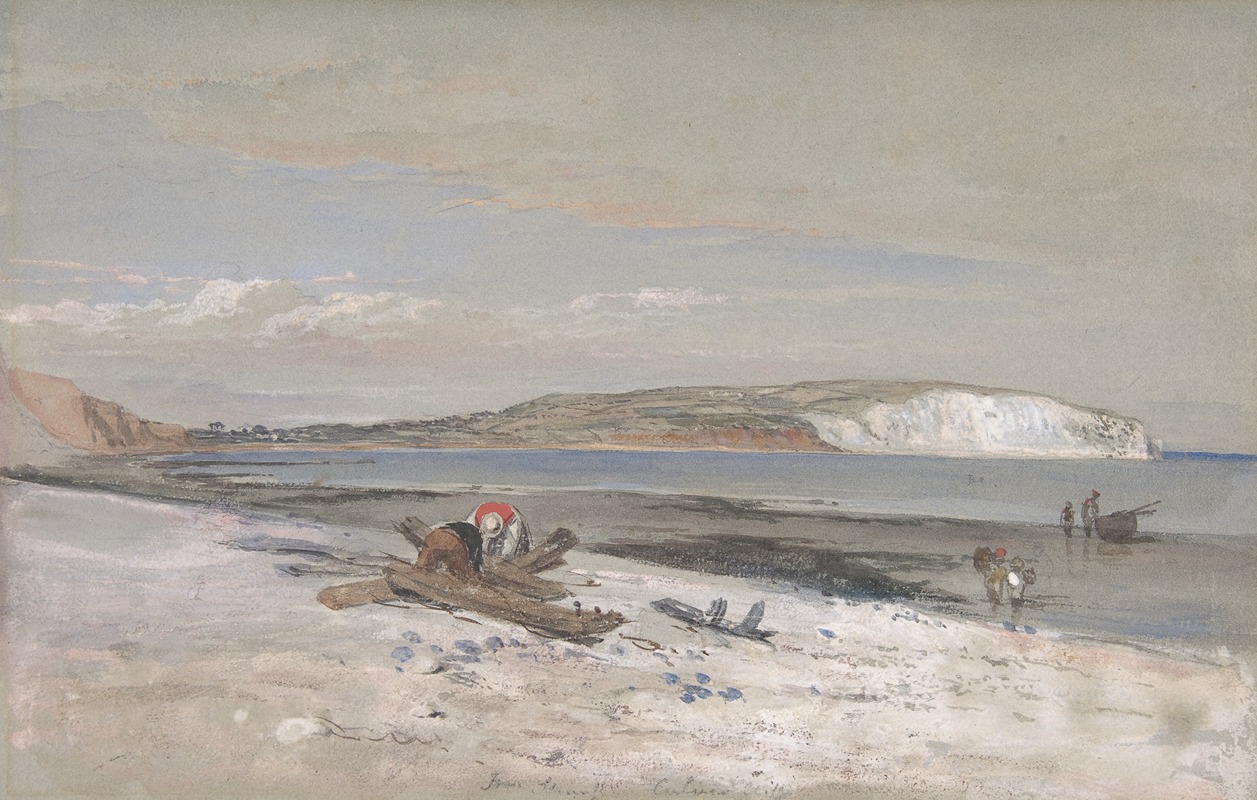
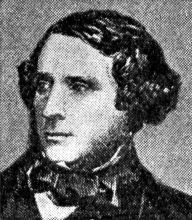
William Dyce FRSE RSA RA was a Scottish artist, who played a part in the formation of public art education in the United Kingdom, and the South Kensington Schools system. Dyce was associated with the Pre-Raphaelite Brotherhood and played a part in their early popularity.
Dyce was born on the 19 September 1806 at 48 Marischal Street in Aberdeen, the son of Dr William Dyce of Fonthill and Cuttlehill FRSE (1770–1835) and Margaret Chalmers of Westburn (1776–1856). His uncle was General Alexander Dyce FRSE (died 1834). His older brother was Prof Robert Dyce FRSE.
After studying at Marischal College, Dyce early showed an aptitude for design and began his artistic career at the Royal Academy schools in Edinburgh and London. He travelled to Rome for the first time in 1825, and while there he studied the works of Titian and Poussin. He returned to Aberdeen after nine months, and painted several pictures, including Bacchus nursed by the Nymphs of Nysa, which was exhibited in 1827. He returned to Rome in 1827, this time staying for a year and a half, and during this period he appears to have made the acquaintance of the German Nazarene painter Friedrich Overbeck, who admired Dyce's Virgin and Child. After these travels, Dyce settled for several years in Edinburgh. He supported himself by painting portraits at first, but soon took to other subjects of art, especially the religious subjects he preferred.
In 1837 Dyce was given charge of the School of Design in Edinburgh, and was then invited to London, where he was based thereafter, to head the newly established Government School of Design, later to become the Royal College of Art. Before taking up this post in 1838 he and a colleague were sent to visit France and Germany to enquire into design education there and prepare a report. He left the school in 1843, to be able to paint more, but remained a member of the Council of the school. The ideas that were turned in the following decade into the "South Kensington system" that dominated English art education for the rest of the century really have their origin in Dyce's work.
In 1844, having been appointed professor of fine art in King's College London, he delivered a significant lecture, The Theory of the Fine Arts. In 1835 he had been elected an associate of the Royal Scottish Academy, an honour he relinquished upon settling in London, and he was then made an honorary member. In 1844 he became an associate, and in 1848 a full member, of the London Royal Academy of Arts; he also was elected a member of the Pennsylvania Academy of the Fine Arts in Philadelphia.
Dyce is less known for, but nevertheless important as, the founder of the Motett Society (1840–1852), which sought to advance the restoration and liturgical use of long-neglected works of the English church. He was noted as an able organist, and is also reputed to have composed some musical works (unverified).
Dyce died in Streatham in Surrey on 14 February 1864. He is buried in the churchyard of St Leonards Church in Streatham. He is also memorialised on his parent's grave in St Nicholas Churchyard on Union Street in Aberdeen, and there is a street in Streatham named for him – William Dyce Mews. A stained glass window in St Machar's Cathedral is jointly dedicated to Dyce.
